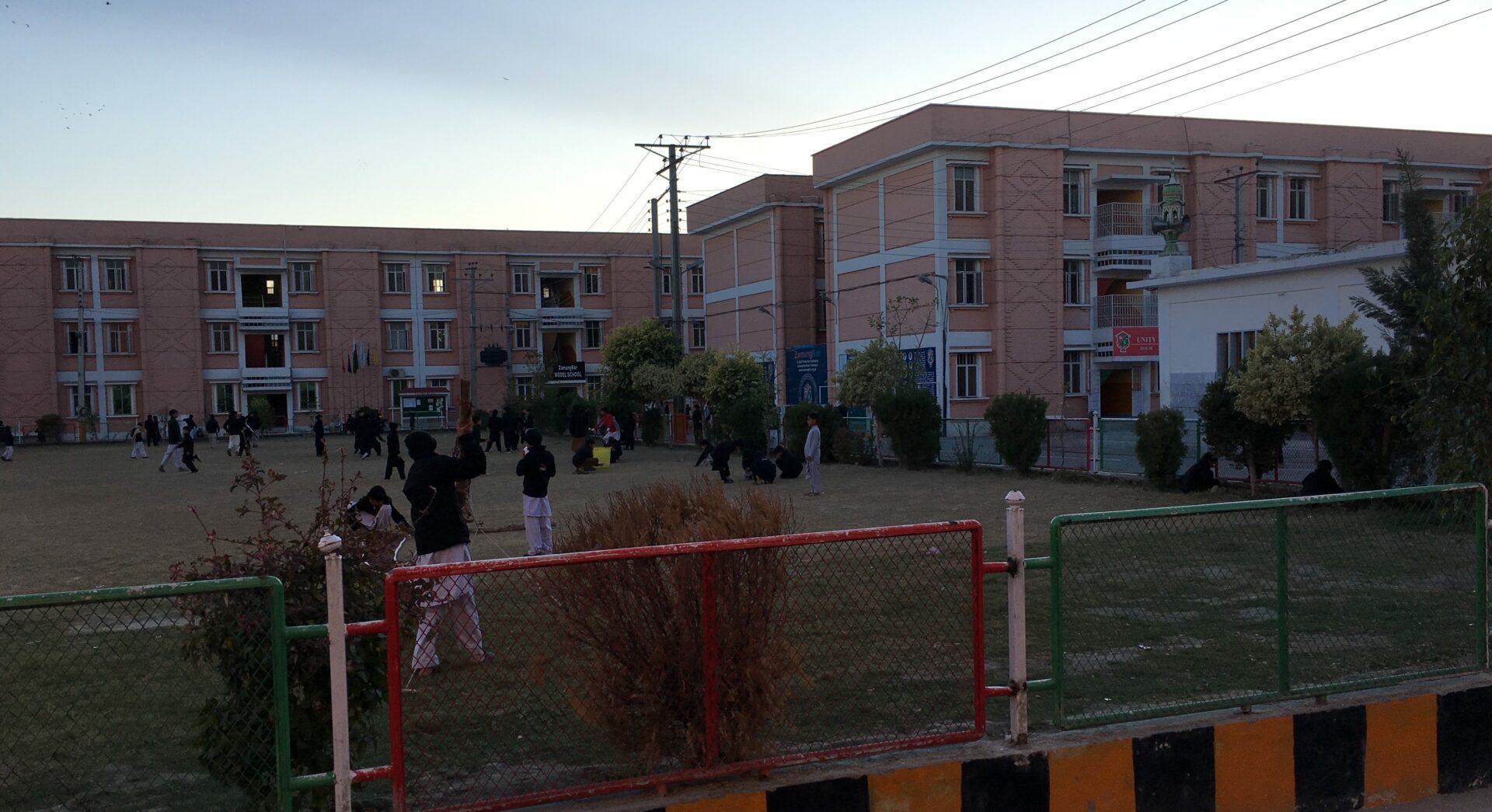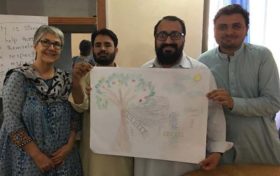

Just outside of the city of Peshawar in the northwestern Khyber Pakhtunkhwa province of Pakistan is an orphanage, actually a residential boarding school with 180 boys, ages 5-12, who had lost their fathers and were street beggars. The facility, called Zamung Kor, Pukhtu for ‘Our Home’ was established a few years ago by the Provincial government in buildings originally designed for families of government workers. Because of its location outside of Peshawar, few people were willing to move there so the buildings were re-purposed for use as a residential school.
This was my second visit to the facility to conduct a psychosocial 
Each day started with someone standing and reading a list of the Focusing steps while others focused. Because most of the participants had experienced Focusing during the first training session in December 2017, this reinforced their practice. Each time there were people in the room with tears. It didn’t matter how well the reader read the instructions. What was important was that the reader was “holding the space, holding the place” for those who were going inside. And in the process of going inside, that person reminded people of what they might do with their inner ‘guest.’
Several activities were specifically included to be helpful in working with traumatized children.
1. I asked people to take a pause, check inside and see if they had something that they did not want to have in their heart today. And then see if it would be okay to draw this or write this down. Those that wrote something would then crumple or tear the paper into bits, using the emotion behind what was written. They would then toss the paper into the wastebasket and leave it behind.
People reported that they really liked doing this because there are things in their life they cannot talk about but want to have a break from. We also talked about journaling and art as ways to get things moved from inside to out.
2. Each day I asked people to find a place where they felt gratitude inside. We talked about what that felt like and how children might find this helpful. Once after asking people to sit in their inside place of gratitude, I asked them to imagine a secure box in their house or classroom – one that is imaginary but very safe. Then I asked them to take each of their problems, one by one, name them and then place them carefully in the box. After they had everything out of their body and into the box, they were invited to lock the box and put the key in a safe place. Next I asked them to feel inside what it’s like to have all that empty space. At the end of this, several people said they felt so light and airy.
3. We had discussions on managing difficult students – some who will not sit down, who destroy blackboards and books, who disturb other students. We worked on strategies to listen to these kids. One frank discussion was about what to do if they discover that one child has become a sexual predator, which apparently has happened with an older boy, a supposedly ‘model student’, who was actually bullying and then abusing younger children. We explored ways to manage this, including the possibility of expelling the student, acknowledging that fact that local services for poor children with psychological problems are very limited.
Toward the end of the training, we worked together to identify what is going well and to them identify areas where teachers can impact a child’s future:

We closed the program by having everyone spend a short time Focusing on what the workshop was like for them and what they may have learned. Then each of the three groups of teachers were instructed to draw a shared picture of what came for them. They weren’t allowed to talk to each other but to sense what was shared between them. As the activity started, most of the participants sat watching one person draw. With encouragement, very soon everyone was laughing as they colored their shared artwork. Some told me they thought they could use many of the activities with their students.
The Principal and Director have invited me back.
Copyright © 2024 - Focusing Initiatives International, All Right Reserved. - Privacy Policy, how we process your personal data.